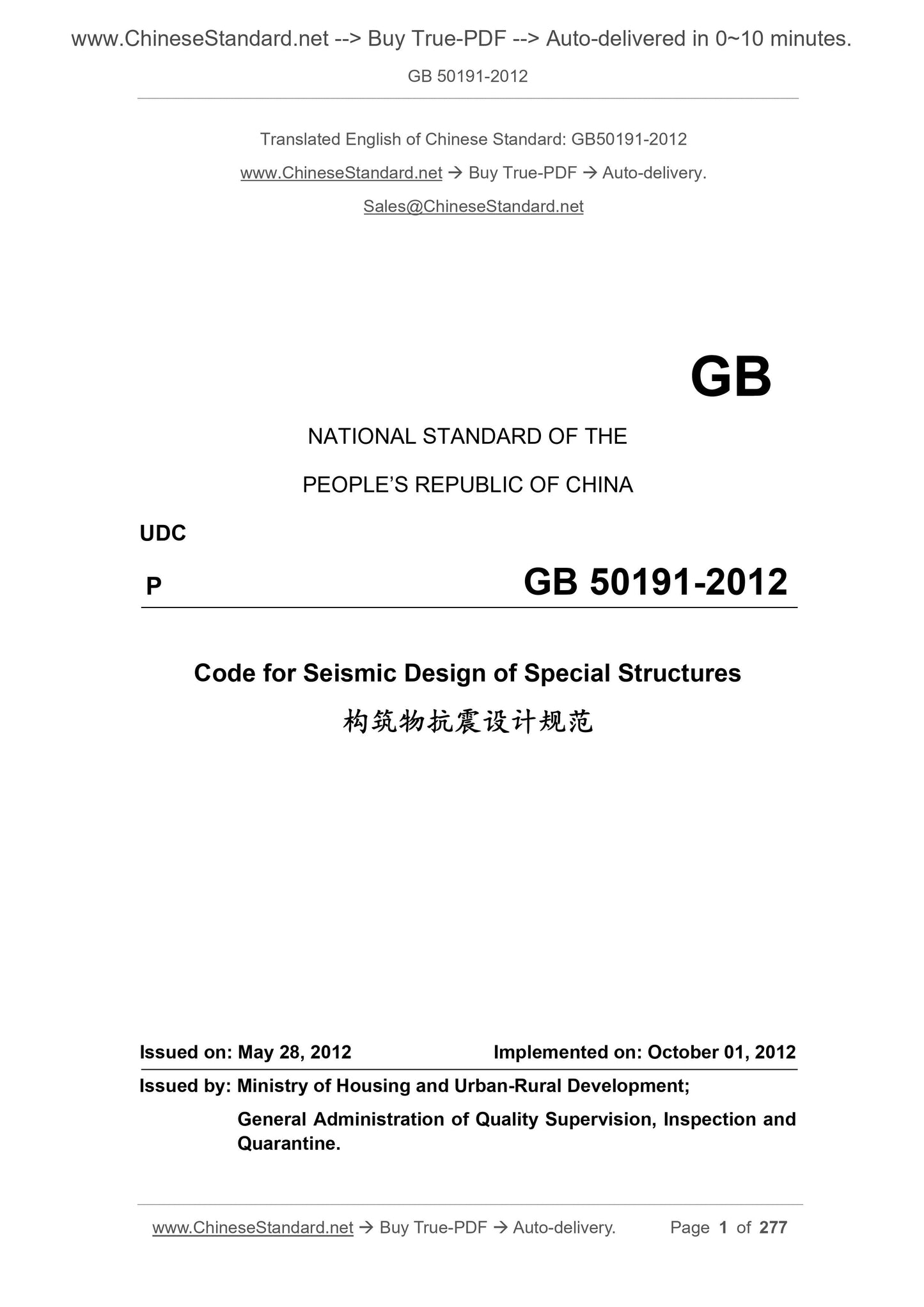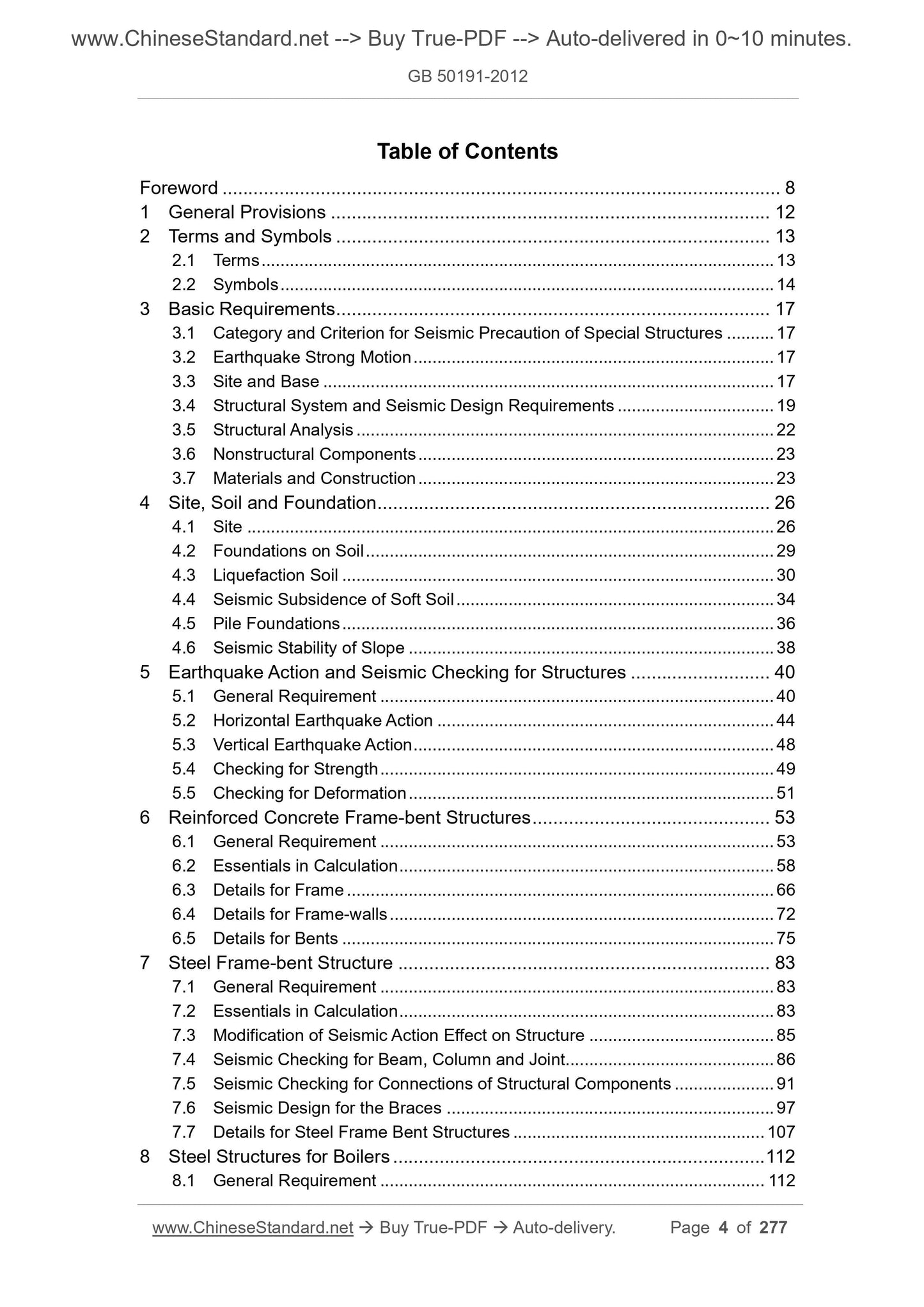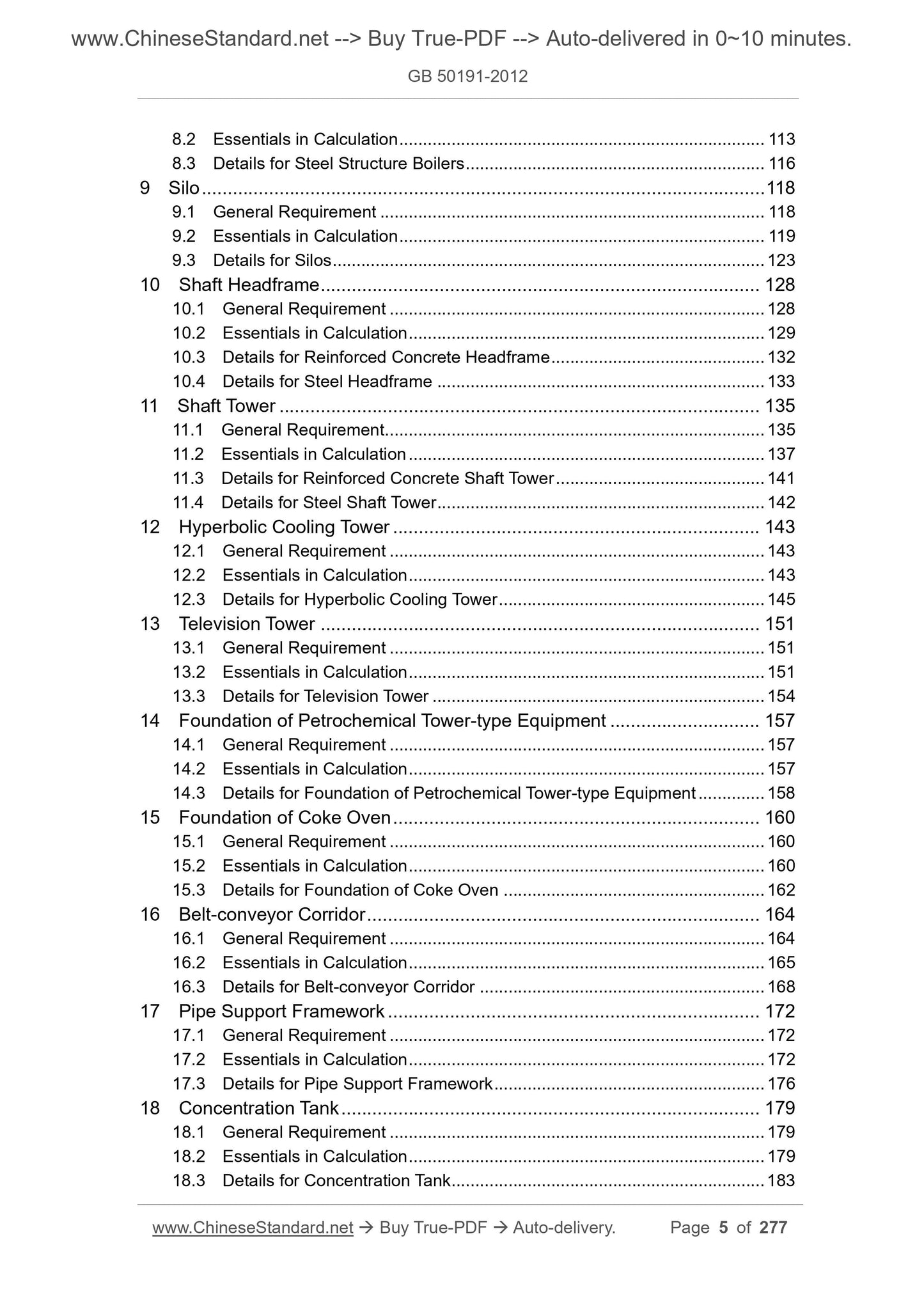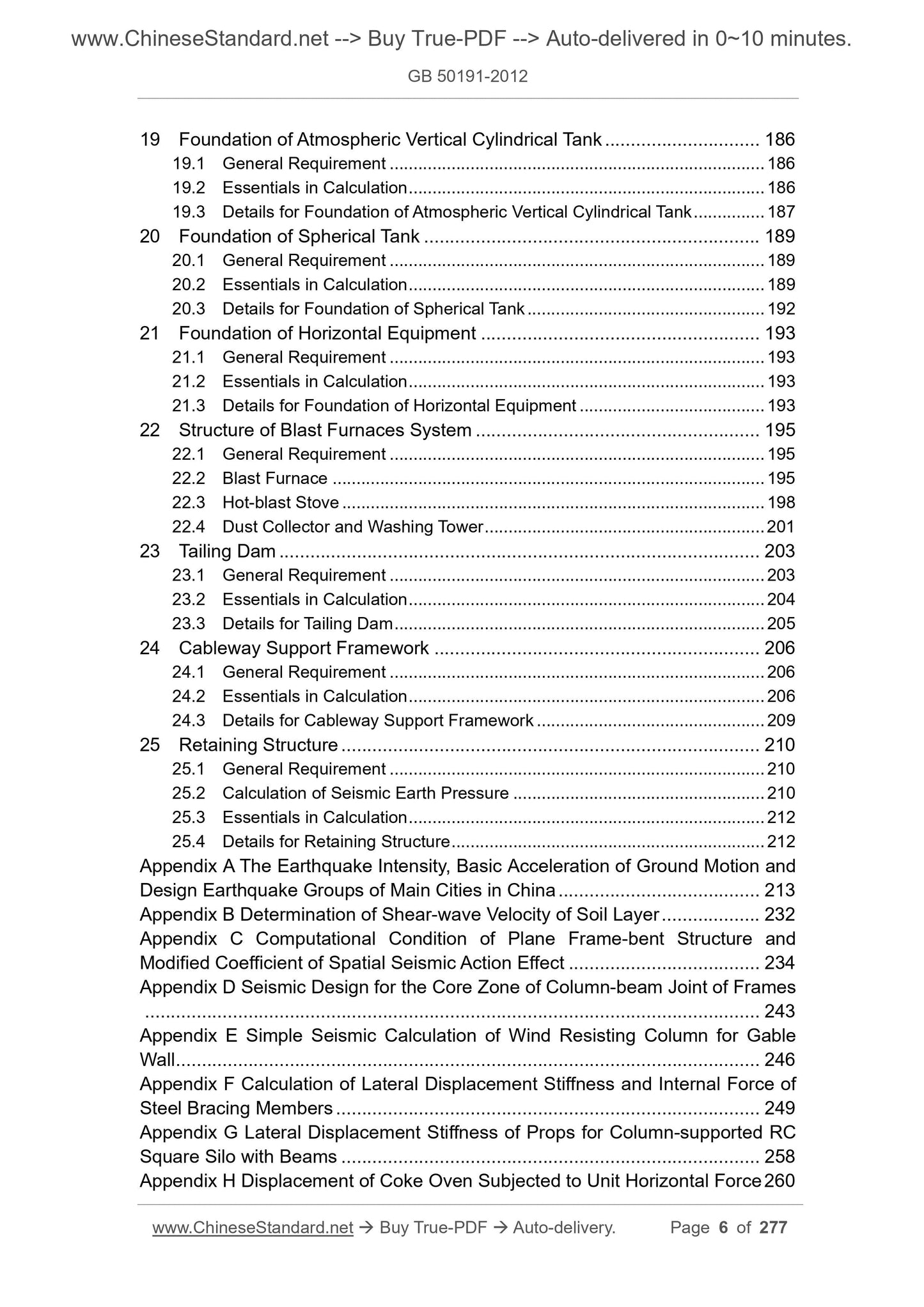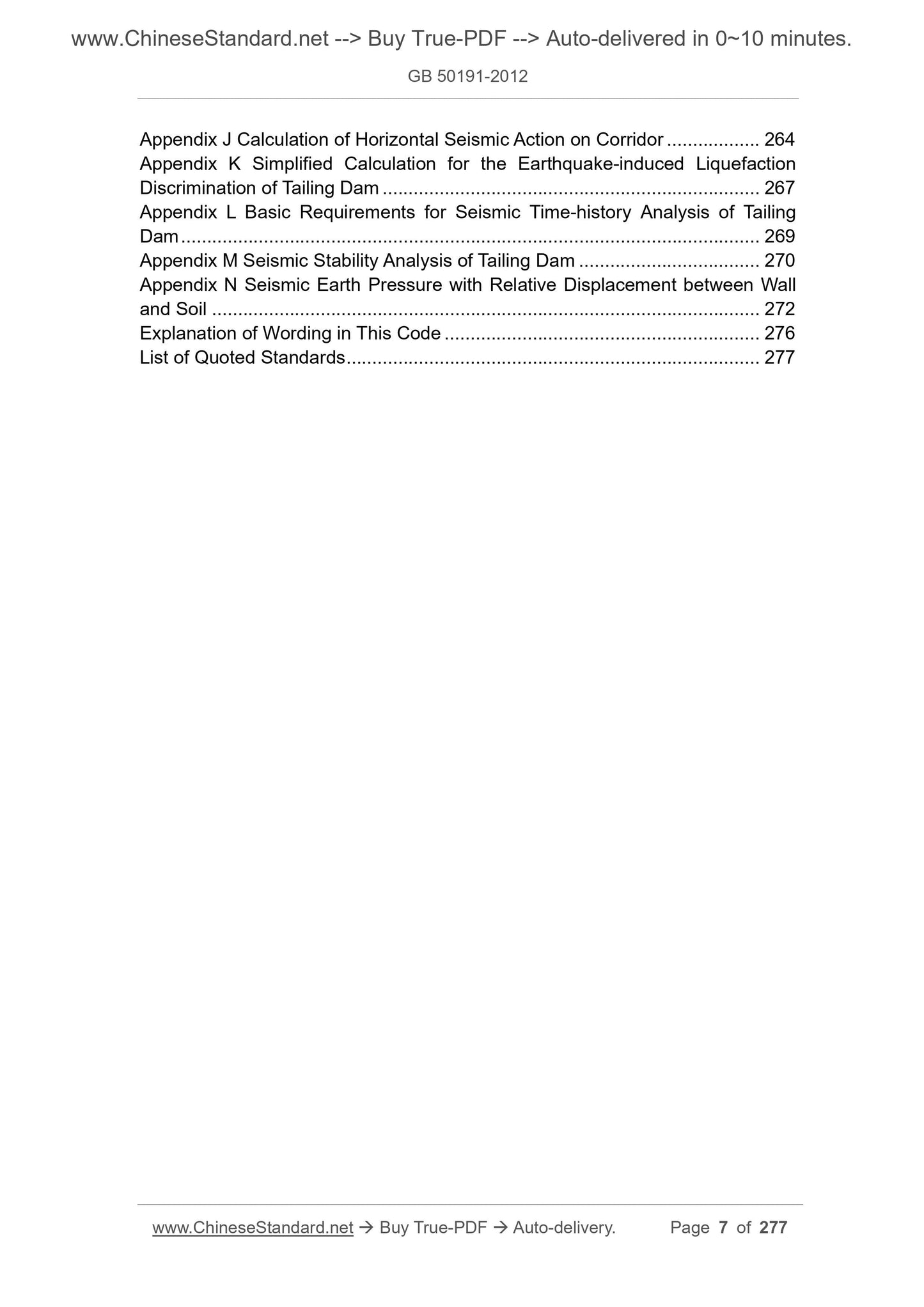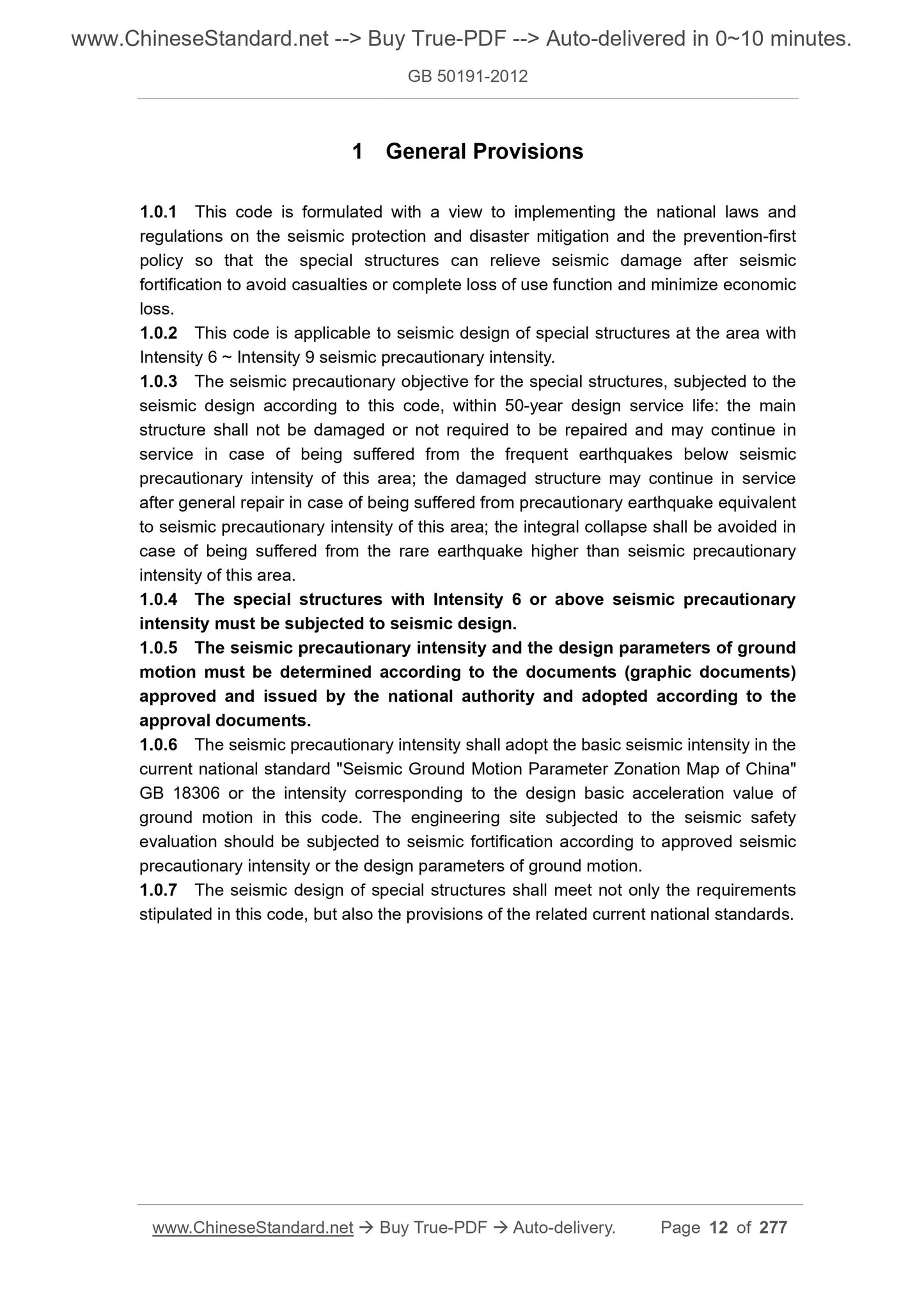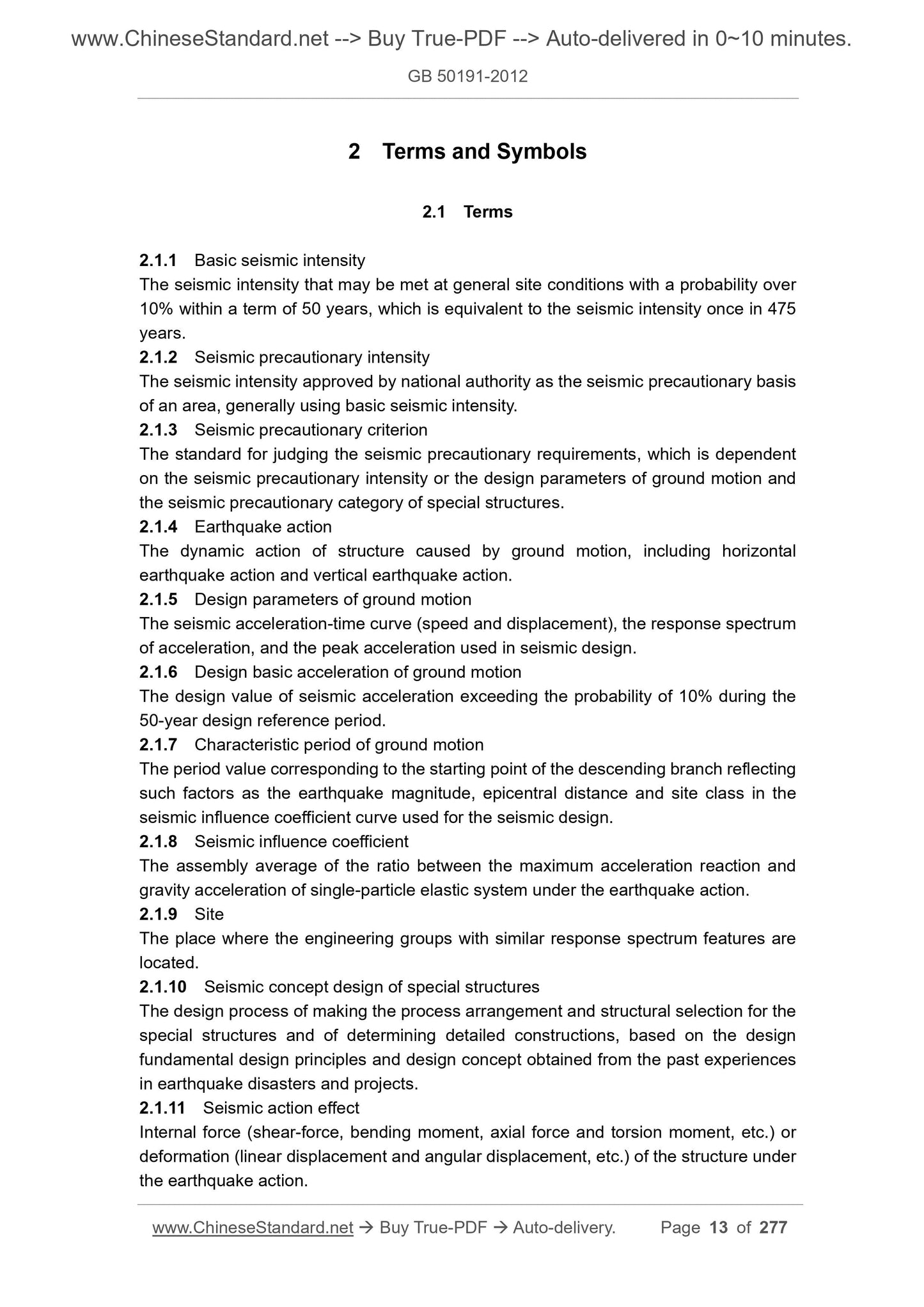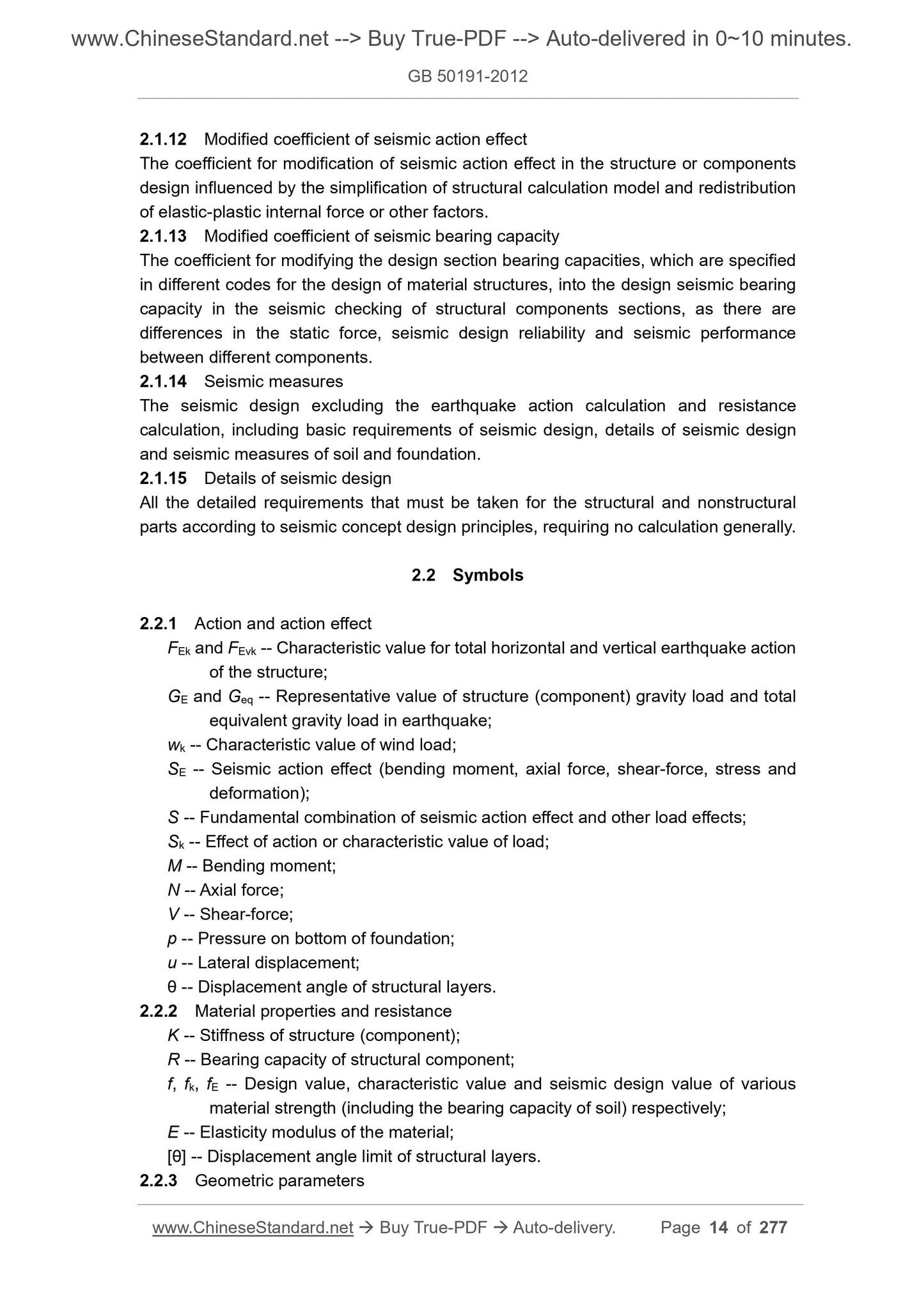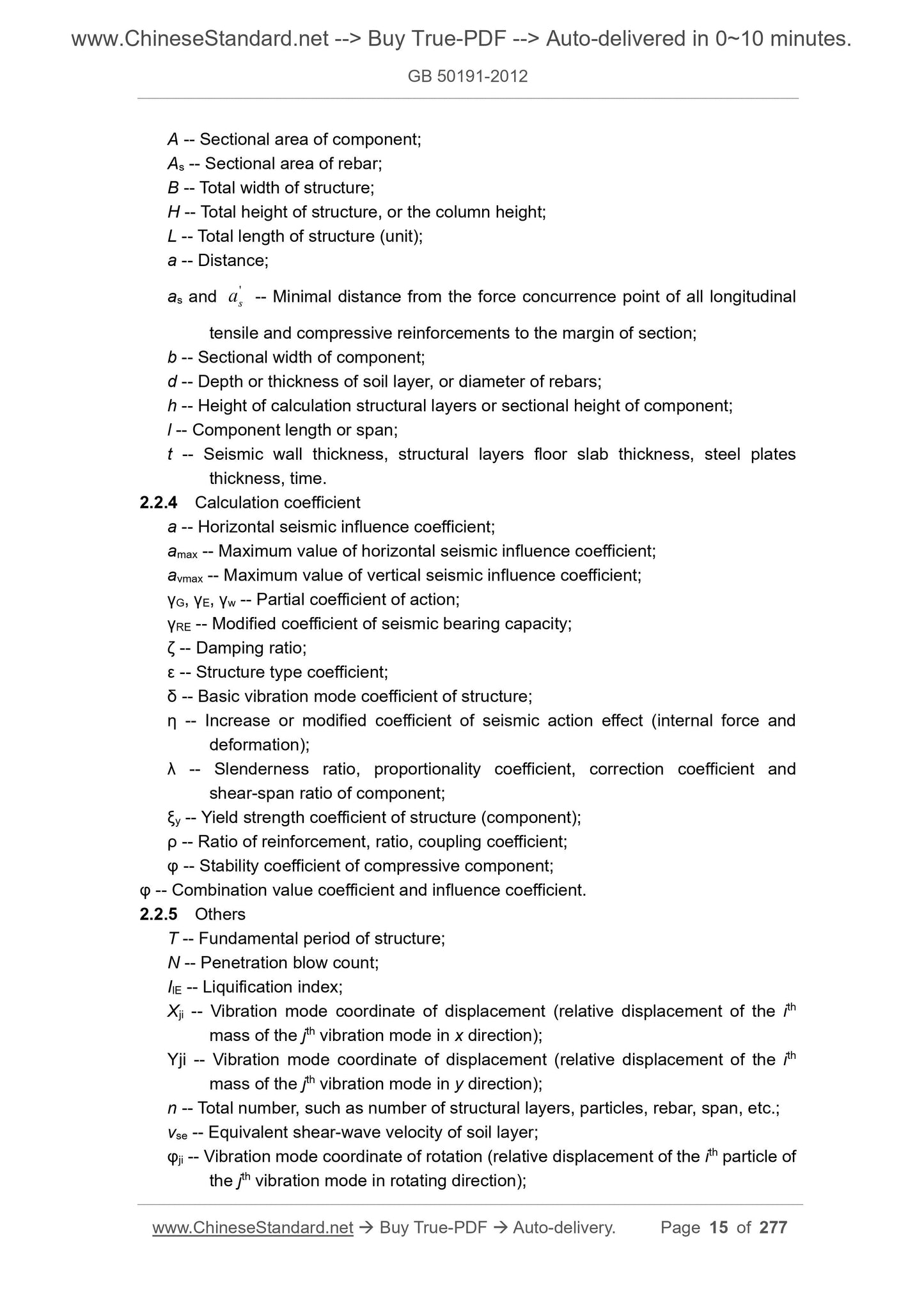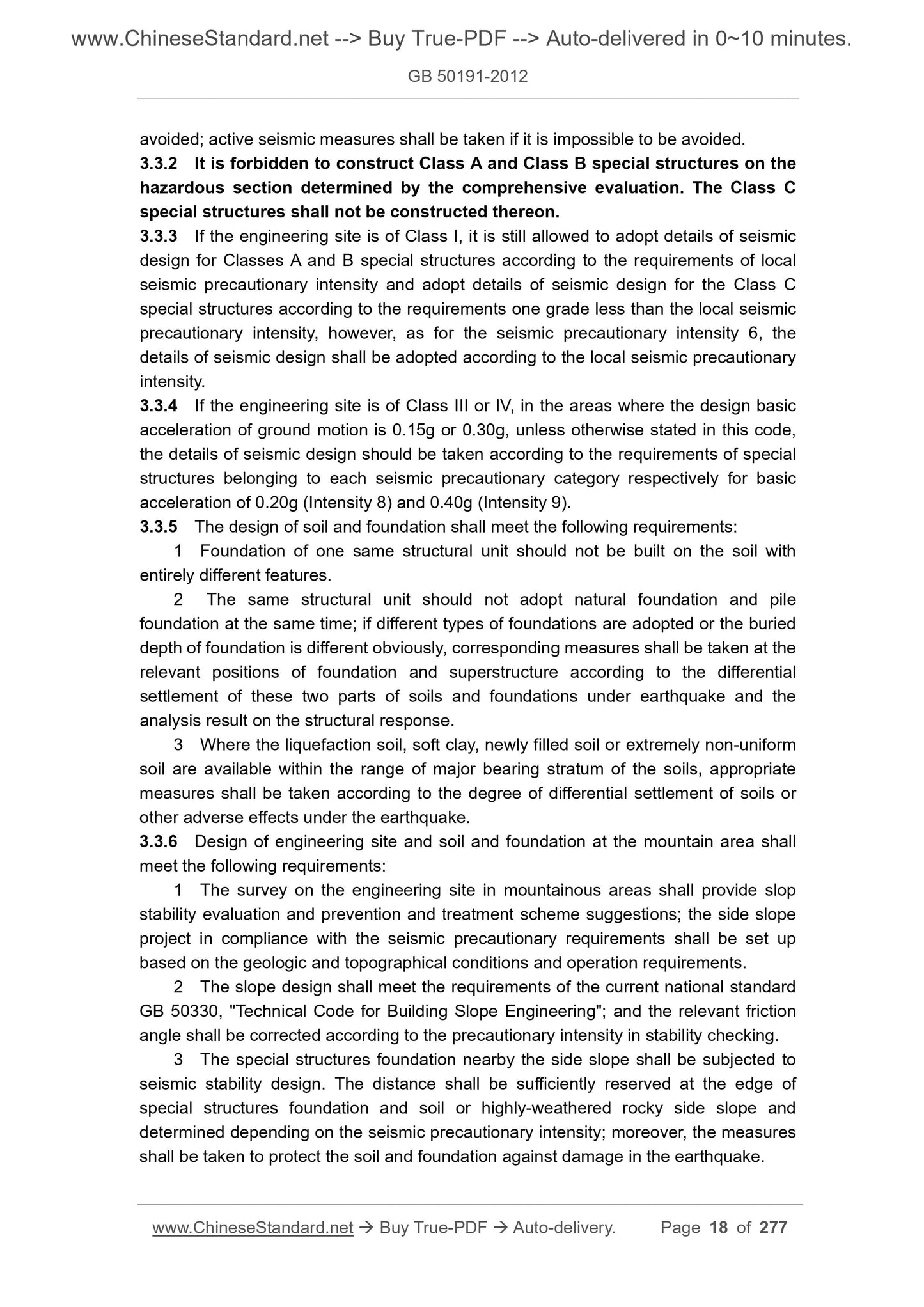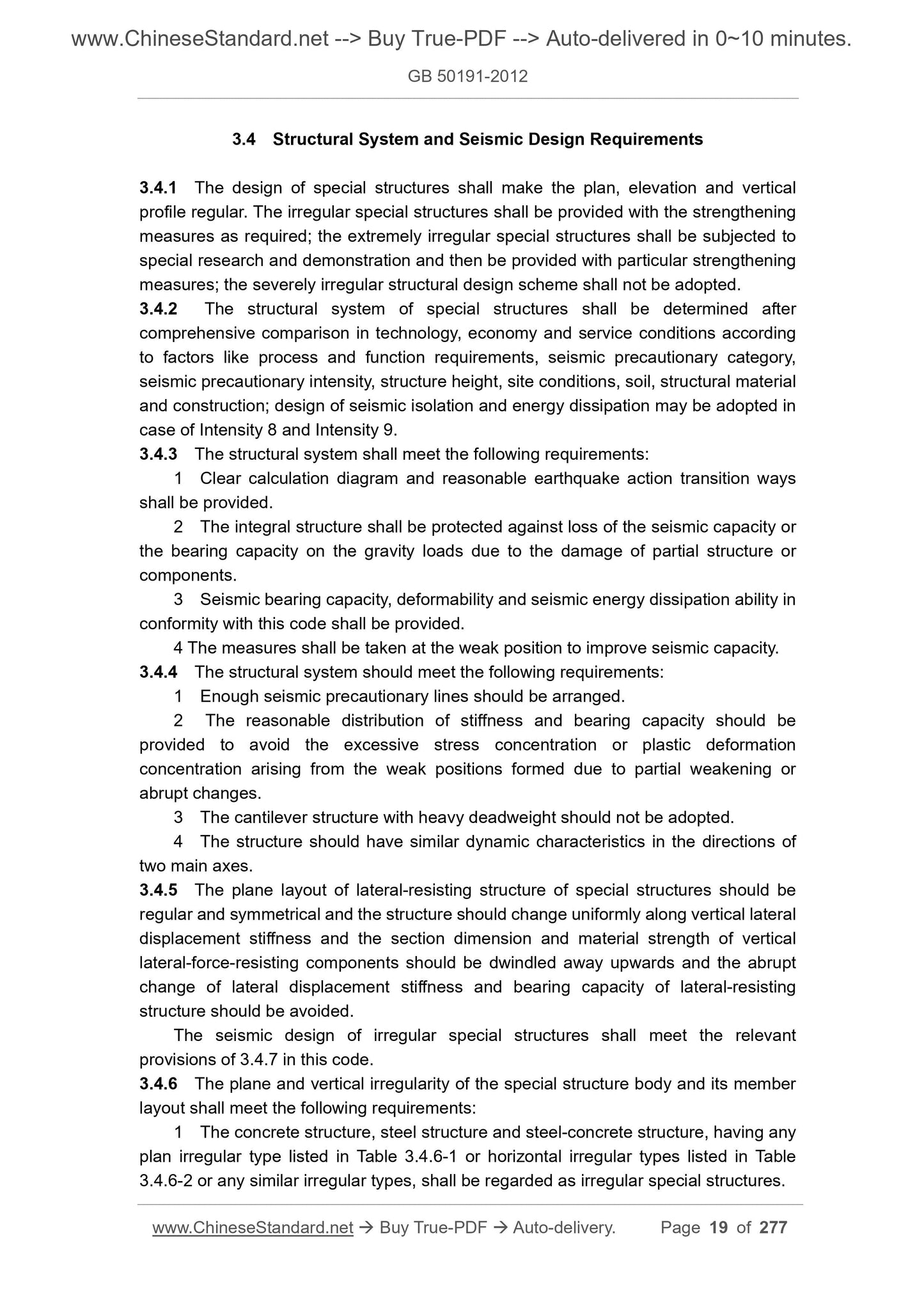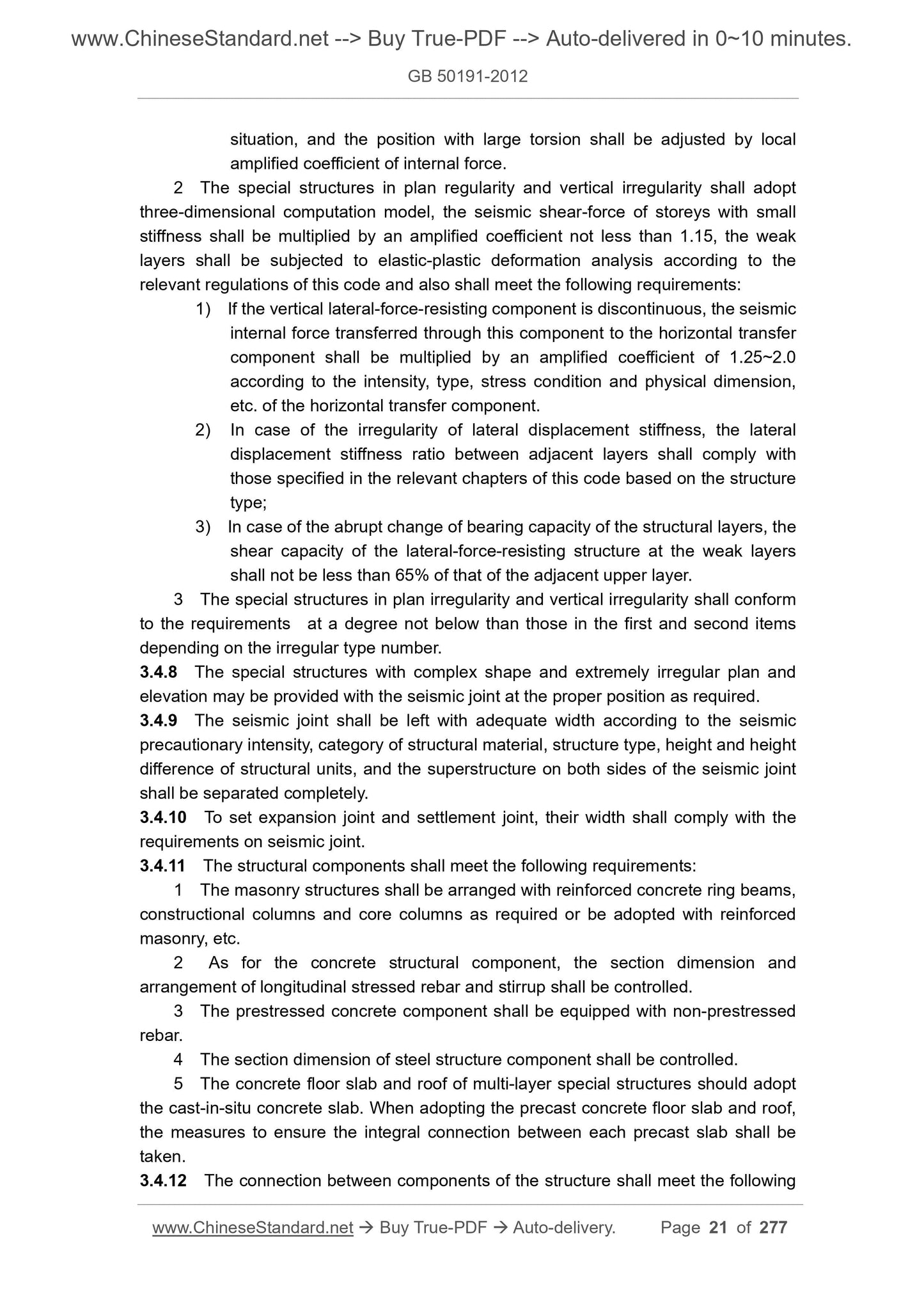1
/
of
12
www.ChineseStandard.us -- Field Test Asia Pte. Ltd.
GB 50191-2012 English PDF
GB 50191-2012 English PDF
Regular price
$305.00
Regular price
Sale price
$305.00
Unit price
/
per
Shipping calculated at checkout.
Couldn't load pickup availability
GB 50191-2012: Code for seismic design of special structures
Delivery: 9 seconds. Download (and Email) true-PDF + Invoice.Get Quotation: Click GB 50191-2012 (Self-service in 1-minute)
Newer / historical versions: GB 50191-2012
Preview True-PDF
Scope
1.0.1 This code is formulated with a view to implementing the national laws andregulations on the seismic protection and disaster mitigation and the prevention-first
policy so that the special structures can relieve seismic damage after seismic
fortification to avoid casualties or complete loss of use function and minimize economic
loss.
1.0.2 This code is applicable to seismic design of special structures at the area with
Intensity 6 ~ Intensity 9 seismic precautionary intensity.
1.0.3 The seismic precautionary objective for the special structures, subjected to the
seismic design according to this code, within 50-year design service life. the main
structure shall not be damaged or not required to be repaired and may continue in
service in case of being suffered from the frequent earthquakes below seismic
precautionary intensity of this area; the damaged structure may continue in service
after general repair in case of being suffered from precautionary earthquake equivalent
to seismic precautionary intensity of this area; the integral collapse shall be avoided in
case of being suffered from the rare earthquake higher than seismic precautionary
intensity of this area.
1.0.4 The special structures with Intensity 6 or above seismic precautionary
intensity must be subjected to seismic design.
1.0.5 The seismic precautionary intensity and the design parameters of ground
motion must be determined according to the documents (graphic documents)
approved and issued by the national authority and adopted according to the
approval documents.
1.0.6 The seismic precautionary intensity shall adopt the basic seismic intensity in the
current national standard "Seismic Ground Motion Parameter Zonation Map of China"
GB 18306 or the intensity corresponding to the design basic acceleration value of
ground motion in this code. The engineering site subjected to the seismic safety
evaluation should be subjected to seismic fortification according to approved seismic
precautionary intensity or the design parameters of ground motion.
1.0.7 The seismic design of special structures shall meet not only the requirements
stipulated in this code, but also the provisions of the related current national standards.
Basic Data
| Standard ID | GB 50191-2012 (GB50191-2012) |
| Description (Translated English) | Code for seismic design of special structures |
| Sector / Industry | National Standard |
| Classification of Chinese Standard | P15 |
| Classification of International Standard | 91.120.25 |
| Word Count Estimation | 450,424 |
| Older Standard (superseded by this standard) | GB 50191-1993 |
| Quoted Standard | GB 50007; GB 50010; GB 50011; GB 50017; GB 50135; GB 50204; GB 50223; GB 50330; GB/T 5313; GB 18306 |
| Regulation (derived from) | Ministry of Housing and Urban-Rural Development Bulletin No.1392 |
| Issuing agency(ies) | Ministry of Housing and Urban-Rural Development of the People's Republic of China; General Administration of Quality Supervision, Inspection and Quarantine of the People's Republic of China |
| Summary | This standard applies to seismic intensity of 6 degrees -9 degrees regional seismic design of structures. |
Share
